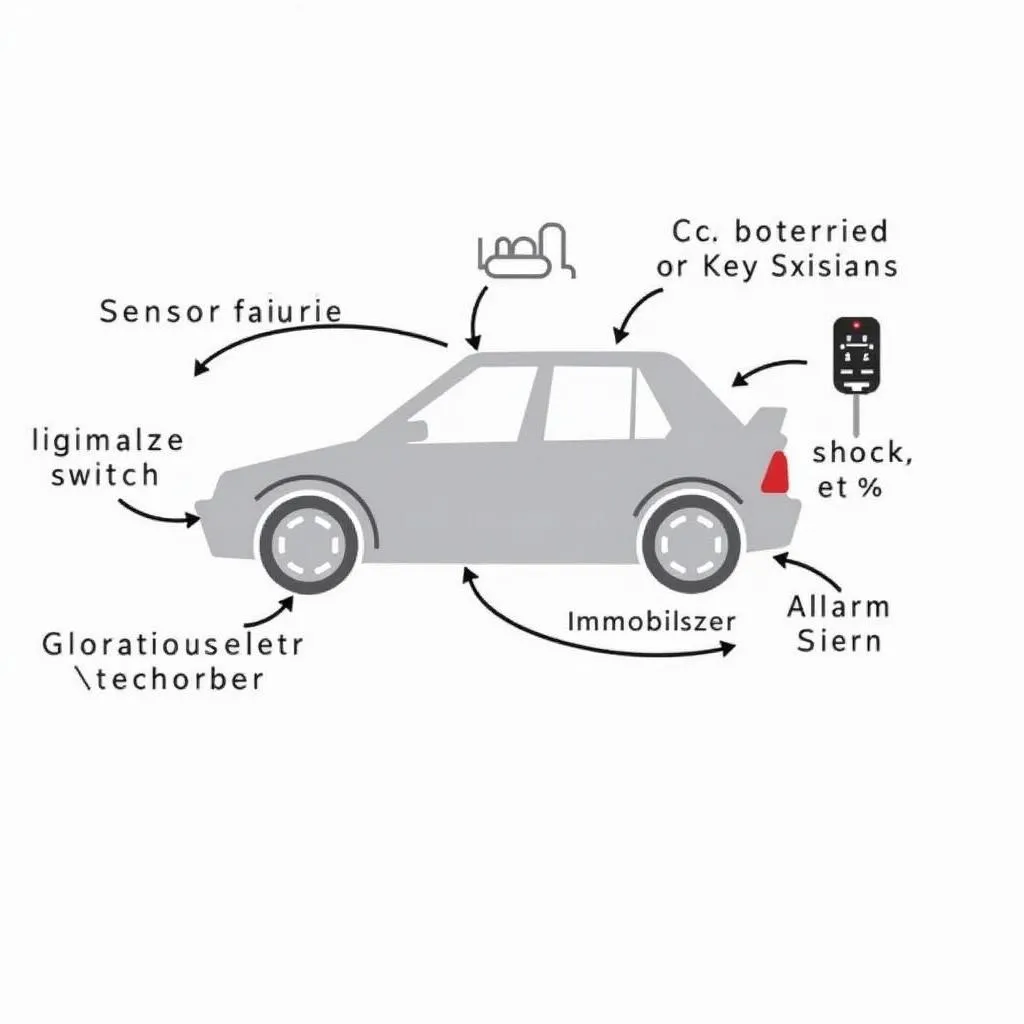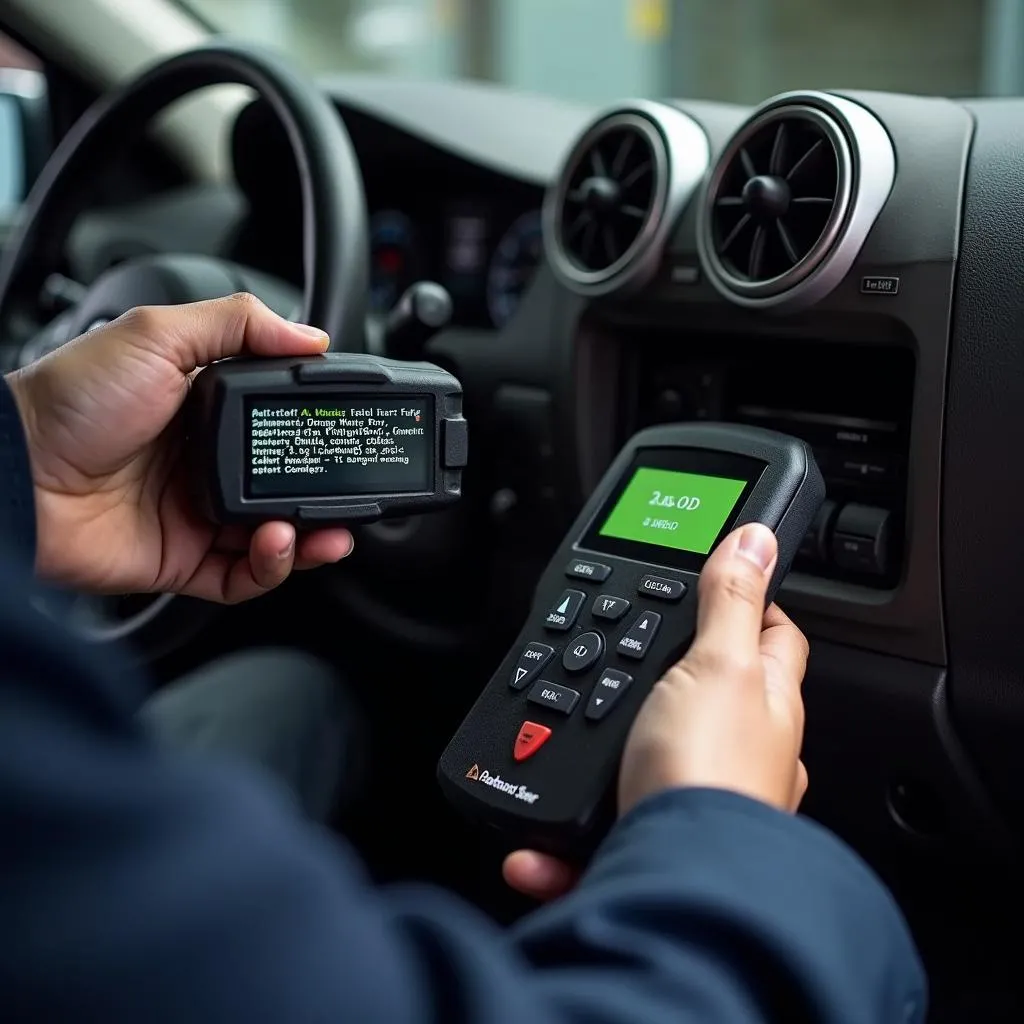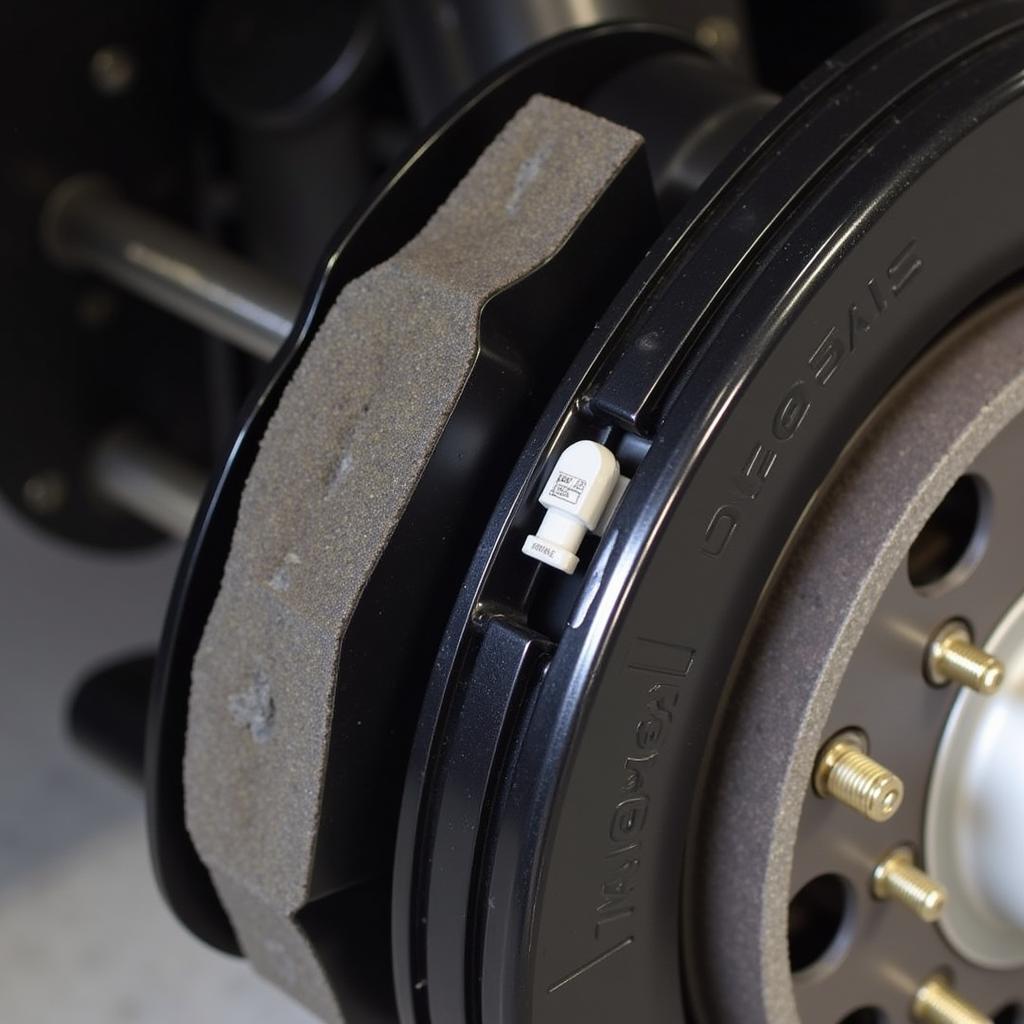Have you ever walked up to your car, key fob in hand, only to be greeted by the insistent blare of the alarm and a flashing immobilizer light? It’s a frustrating experience that can make you late for work and leave you feeling stranded. This is your car’s anti-theft system kicking in, and while it’s designed to protect your vehicle, it can sometimes malfunction and cause more headaches than it solves.
Common Culprits Behind Anti-Theft System Issues
Several factors can trigger your car’s anti-theft system unnecessarily. Here are a few common culprits:
1. Weak or Dead Car Battery
One of the most common triggers for anti-theft system issues is a weak or dead car battery. “The anti-theft system requires a stable power supply to function correctly,” explains automotive electrical engineer, Dr. Emily Carter, author of “Modern Automotive Electronics.” “When the battery weakens, it can disrupt the system’s voltage, leading to false alarms and starting problems.”
2. Faulty Key Fob Battery or Signal Issues
Your car’s key fob relies on a battery to send a signal to the vehicle’s immobilizer system. If the battery is weak or dead, the signal might not reach the car, triggering the anti-theft system. Additionally, interference from other electronic devices or physical obstructions can disrupt the signal transmission.
3. Damaged or Corroded Wiring
Over time, the wiring in your car’s electrical system, especially around the battery, ignition switch, and immobilizer components, can become damaged or corroded. This can create electrical shorts or open circuits, leading to erratic behavior in the anti-theft system.
4. Malfunctioning Ignition Switch
The ignition switch is responsible for sending a signal to the immobilizer system when you turn the key. If the switch is faulty, it might not send the correct signal, causing the anti-theft system to activate.
5. Faulty Sensors
Modern cars are equipped with various sensors that play a role in the anti-theft system. For instance, a malfunctioning door lock sensor might send a false signal to the system, indicating an attempted break-in.
 Car Anti-theft System Components
Car Anti-theft System Components
Identifying the Problem
Diagnosing an anti-theft system issue often requires specialized equipment like an OBD-II scanner, which can read diagnostic trouble codes stored in the vehicle’s computer. “These codes provide valuable insights into the specific area of the system experiencing problems,” says automotive electronics expert, John Miller.
You can also look for telltale signs like:
- Rapidly flashing hazard lights: This is a common indicator of an activated anti-theft system.
- Clicking sounds from the starter motor: This could point towards a problem with the immobilizer preventing the engine from starting.
- Inability to lock or unlock doors with the key fob: This suggests a problem with the key fob’s battery, signal transmission, or the car’s receiver.
 Mechanic Using OBD2 Scanner
Mechanic Using OBD2 Scanner
If you suspect your car’s anti-theft system is malfunctioning, it’s crucial to consult a qualified automotive electrician or a trusted mechanic experienced in car electronics. They have the expertise and tools to diagnose the issue accurately and recommend the appropriate solutions, which might range from simple battery replacements to more complex repairs involving wiring harnesses or control modules.
For DIY enthusiasts, resources like Cardiagtech offer valuable information and guides on diagnosing and troubleshooting automotive electronic systems. However, remember that tampering with the anti-theft system without proper knowledge can exacerbate the problem or even compromise your car’s security.
To learn more about specific anti-theft system issues and how to reset them, check out these articles:
- How Often Is Anti-theft Device on Cars Falsely Activated?
- A 2012 Dodge Caravan Anti-theft Lock Reset
- How Do I Turn Off Anti-theft System?
Remember, a properly functioning anti-theft system provides peace of mind, but a faulty one can lead to frustrating and inconvenient situations. By understanding the common causes and seeking professional help when needed, you can ensure your car’s security system works effectively and protects your vehicle without unnecessary interruptions.


